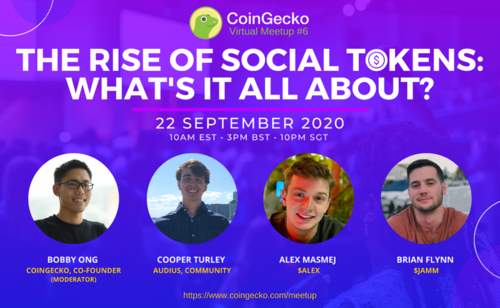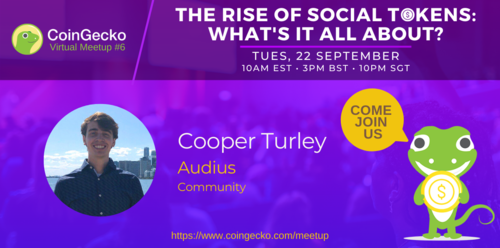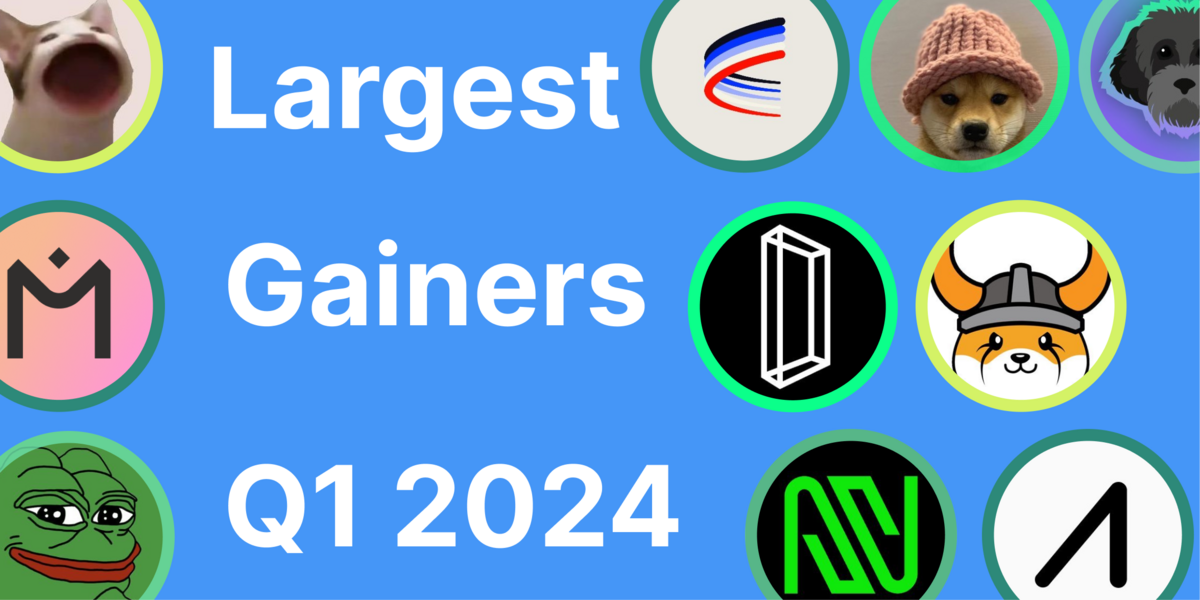The NFT space is rapidly evolving as creators from all backgrounds tap into the potential of owning their artwork, connecting with their fanbase, and earning a fair piece of the cake. With so much going on, we explored the crypto creator’s economy in our recent Virtual Meetup #11 on 8 April, 2021 @ 9PM EST.
CoinGecko’s Virtual Meetup is our live online community event where we explore different key topics in the crypto sphere and invite industry leaders to share their two satoshis.
In this meetup, we talked to Roneil Rumburg (Co-founder and CEO of Audius), Alexei Falin (Co-founder and CEO of Rarible), and Gareth Emery (Producer and DJ) about the recent NFT movement, types of creative content, and more!
What is the reason behind the recent NFT movement?
Gareth pointed out that late 2020 and early 2021 was a melting pot of circumstances that has driven people to the space. He said that the, “Pandemic caused people to stay at home and spend more time on their computers.” Other than that, he identifies issues within the music industry to be another reason artists are experimenting with NFTs.
Both Roneil and Alexei believe that it is also the issue of ownership and how the blockchain is restructuring the system in favour of artists. “Creators own the NFTs that go up on the platforms,” said Alexei while Roneil suggested that, “Platforms are not really acting as platforms because it isn’t just a company sitting in the middle performing transactions.”
How has the traction been and what are creators skeptical about when joining the crypto space?
Roneil shared that people were more open than ever to learning more about the space and even engaging more. They were looking for new ways to engage with fans and also new ways to replace lost revenue from touring and performing.
Has it been a mix of artists jumping on Rarible?
In regards to Rarible, Alexei shared that the platform is now seeing different types of artists such as music artists, crypto artists, digital artists, and also traditional artists. He agrees that, “During this pandemic, we are seeing a portion of artists lose their income that they were previously getting from galleries and such.” Now, they have turned into digital artists and are making money from platforms such as Rarible.
What about the issue of people copying content and minting it as their own?
Alexei clarified that, “This is not a huge problem now but definitely something that we can fix because we want to be honest and do the right thing for the market.” He hypothesized that it might involve a shared database on the blockchain for platforms to use.
Meanwhile, Roneil acknowledged that, “Many of our bigger artists are concerned about people uploading content to Audius that they’re not allowed to.” However, the platform has designed layers to address these issues. He also adds that, “We are fortunate that the content is hosted off-chain by a node operator and there is a means to reach out to the node operator with take down requests.”
Gareth is of the opinion that, “It’s always a trade-off when you build a decentralised way and there is no centralised way of policing it. You’ve got to hope that the market doesn’t buy the copies.” Other than that, he considers these as teething issues to work through but the benefits of decentralised technology are worth it.
Do you think the NFT boom is hype or is this a tipping point for something long-term? How are the small artists going to come in and get exposure?
When it comes to the question of hype or future, Gareth believes that it can be both at the same time. However, he hopes that we won’t see such a sharp dive in the market, especially since there are many institutions now buying and holding Bitcoin. One method that he uses to identify artists who are serious about the space is by looking at their backgrounds and credentials to make an educated guess on whether they are going to stick around.
Roneil also chimed in that while the NFT space is currently in a boom and will go through some form of correction at some point, people are still getting value by using these tools and they will continue to keep getting that value. He said, “The folks who are selling NFTs of their art and being able to engage with their fans aren’t going to stop.”
What kind of creative content will we see next?
As a musician, Gareth doesn’t think there are actual music NFTs and instead we just have musicians who are doing art. “Once you can combine music with NFTs, you will unlock the possibilities of combinations,” he said.
Roneil added that, “When you remove limitations of a platform, we are going to see so many different form factors of content that people can explore because they no longer need to follow a one-size fits all style.”
On the other hand, Alexei also mentioned the possibilities of new different services on top of NFTs such as loans, mortgages, and more.
Subscribe to CoinGecko Newsletter
Don’t miss out on our next Virtual Meetup! We’ll let you know when the next one is happening and who will be on it. Subscribe to our daily newsletter so that we can update you.

Stephanie has a keen interest in breaking down complex topics into beginner-friendly pieces. She has been in the crypto space since 2020 and wants to continue contributing to the demystification of the crypto industry to a broader audience.





 Or check it out in the app stores
Or check it out in the app stores
